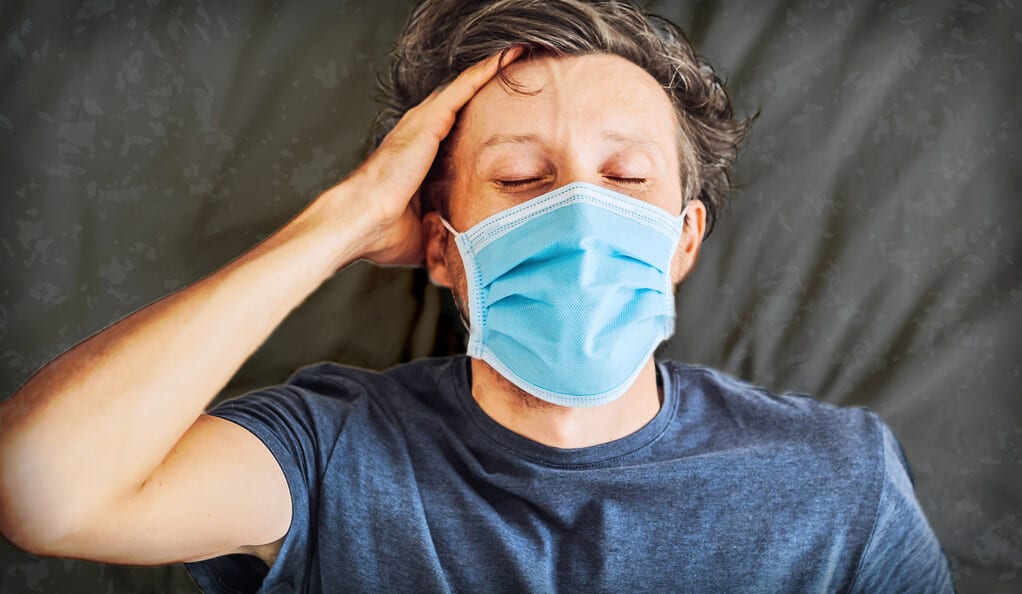The health burden of LONG COVID and the role of Physiotherapy in MDT management
By Graceville Physiotherapist Matt Fowler
The Omicron variant of COVID-19 is considered to be a much weaker, albeit much more contagious, version of the virus[1], but over the next few weeks and months it is looking incredibly likely that most Queenslander’s will become infected. Combined with high vaccination rates, this weaker strain of COVID-19 has shown a decreased risk of hospitalisation when compared to more virulent versions.
A British analysis comparing hospitalisation rates between Omicron and Delta has supported earlier South African studies by demonstrating a 40% reduction in the rate of overnight stays for Omicron infections, and a 15% reduction in the rate of hospital visits.
While this is good news, the widespread effects and burdens of COVID and long COVID will surely become more prevalent in the primary healthcare environment due to the greatly increased number of infections and the chronic multi-system impact of the disease [3].
A 6 month retrospective analysis of COVID-19 cases demonstrated that over 36% of patients were still experiencing symptoms of COVID between 3-6 months post recovery [4]. The three most common features identified in this study were Anxiety/Depression, Abnormal Breathing, and Abdominal symptoms, but even less obvious symptoms such as cognitive change were also demonstrated in high proportions. This data was collected in December 2020 and so reflects a less recent strain of the virus, but more up to date figures still demonstrate a 5-13% prevalence of long COVID symptoms within the 3-6 months post infection period [5,6].
Recent modelling by Australian health economists have predicted that as of December 15th 2021 between 10,000 to 20,000 cases of long COVID have occurred in NSW and Victoria alone. This modelling was completed using the September version of the Doherty Institute model of COVID infection rates as well as Australian and UK long COVID incidence data [5-7]. This modelling predicts within the next 24 months and incidence of up to 133,000 cases of long COVID, and represents a considerable healthcare burden on the intra and post-COVID society.

The burdens of long COVID will require a multidisciplinary approach, but at its essence is a disease of the respiratory system. Since the beginning of the pandemic, early research has shown positive effects in management of breathlessness and exercise capacity of post COVID patients. An early RCT released in May of 2020 demonstrated that among elderly post COVID patients a 6 week regime of respiratory rehabilitation can improve respiratory function [8]. Measures showed not only increased physiological function via vital capacity and forced expiratory volume, but also functional exercise capacity, and even quality of life. Despite being research from elderly patients early in the pandemic, literature reviews and practice guidelines support pulmonary rehabilitation in a multidisciplinary approach [9, 10].
The wide burden of COVID on the healthcare system is very quickly going to spillover from acute to chronic management of patients. Researchers have suggested that referral to respiratory rehabilitation be included as part of the ‘minimum advice’ provided to long COVID patients by their GPs due to the impact it can have on multiple facets of function post infection [11]. The load of management of patients needs to be spread amongst members of the healthcare team in order to provide the best opportunities for patients and their recovery.
- https://www.bmj.com/content/375/bmj.n3144
- https://www.imperial.ac.uk/news/232882/some-reduction-hospitalisation-omicron-delta-englandearly/
- https://www.who.int/publications/i/item/WHO-2019-nCoV-Post_COVID-19_condition-Clinical_case_definition-2021.1
- https://journals.plos.org/plosmedicine/article?id=10.1371/journal.pmed.1003773
- https://www.ons.gov.uk/peoplepopulationandcommunity/healthandsocialcare/conditionsanddiseases/bulletins/prevalenceofongoingsymptomsfollowingcoronaviruscovid19infectionintheuk/1april2021
- https://www.sciencedirect.com/science/article/pii/S2666606521001024?via%3Dihub
- https://iht.deakin.edu.au/wp-content/uploads/sites/153/2021/12/Briefing-Paper_Long-Covid_Final.pdf
- https://pubmed.ncbi.nlm.nih.gov/32379637/
- https://pubmed.ncbi.nlm.nih.gov/33284353/
- https://www.ncbi.nlm.nih.gov/pmc/articles/PMC7418628/
- https://www.ncbi.nlm.nih.gov/pmc/articles/PMC8635671/



